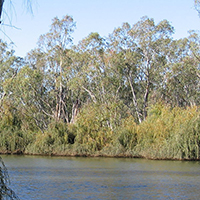Cladocera resting egg banks in temporary and permanent wetlands

Submitted: 14 June 2020
Accepted: 7 October 2020
Published: 28 October 2020
Accepted: 7 October 2020
Abstract Views: 2134
PDF: 446
HTML: 41
HTML: 41
Publisher's note
All claims expressed in this article are solely those of the authors and do not necessarily represent those of their affiliated organizations, or those of the publisher, the editors and the reviewers. Any product that may be evaluated in this article or claim that may be made by its manufacturer is not guaranteed or endorsed by the publisher.
All claims expressed in this article are solely those of the authors and do not necessarily represent those of their affiliated organizations, or those of the publisher, the editors and the reviewers. Any product that may be evaluated in this article or claim that may be made by its manufacturer is not guaranteed or endorsed by the publisher.
Similar Articles
- Graziella MURA, Giovanni FANCELLO, Secondina DI GIUSEPPE, Adaptive strategies in populations of Chirocephalus diaphanus (Crustacea, Anostraca) from temporary waters in the Reatine Apennines (Central Italy) , Journal of Limnology: Vol. 62 No. 1 (2003)
- Ettore BIELLI, Marina TESAURO, The littoral benthon community of Lake Orta after liming: a comparison between summer 1993 and summer 1998 , Journal of Limnology: Vol. 60 No. 2 (2001)
- Eliana A. Panarelli, Helen A. O. Kawamura, Lourdes M. A. Elmoor-Loureiro, Francisco D. R. Sousa, Paulo H. C. Corgosinho, Daniel Previattelli, Carlos E. F. Rocha, Life history of Karualona muelleri (Richard, 1897) (Chydoridae, Aloninae) , Journal of Limnology: Vol. 78 No. 3 (2019)
- Luca BRACCHINI, Arduino M. DATTILO, Vincent HULL, Steven Arthur LOISELLE, Antonio TOGNAZZI, Claudio ROSSI, Modelling Upwelling Irradiance using Secchi disk depth in lake ecosystems , Journal of Limnology: Vol. 68 No. 1 (2009)
- Elena LEGNANI, Diego COPETTI, Alessandro OGGIONI, Gianni TARTARI, Maria Teresa PALUMBO, Giuseppe MORABITO, Planktothrix rubescens’ seasonal dynamics and vertical distribution in Lake Pusiano (North Italy) , Journal of Limnology: Vol. 64 No. 1 (2005)
- Rosaria Lauceri, Mariano Bresciani, Andrea Lami, Giuseppe Morabito, Chlorophyll a interference in phycocyanin and allophycocyanin spectrophotometric quantification , Journal of Limnology: Vol. 77 No. 1 (2018)
- Gabriella SCHÖLL-BARNA, An isotope mass balance model for the correlation of freshwater bivalve shell (Unio pictorum) carbonate δ18O to climatic conditions and water δ18O in Lake Balaton (Hungary) , Journal of Limnology: Vol. 70 No. 2 (2011)
- Benedetta PONTI, Roberta PISCIA, Roberta BETTINETTI, Marina MANCA, Long-term adaptation of Daphnia to toxic environment in Lake Orta: the effects of short-term exposure to copper and acidification , Journal of Limnology: Vol. 69 No. 2 (2010)
- Valeria Di Nica, Sara Villa, Valeria Lencioni, Environmental concerns about the effects of effluents from wastewater treatment plants in tourist areas of the Alps: toxicity in aquatic microorganisms , Journal of Limnology: Vol. 80 No. 3 (2021): Celebratory Issue - 80th Anniversary of the Journal of Limnology
- John A.E. GIBSON, Louise CROMER, Janelle T. AGIUS, Sandra J. MCINNES, Nigel J. MARLEY, Tardigrade eggs and exuviae in Antarctic lake sediments: insights into Holocene dynamics and origins of the fauna , Journal of Limnology: Vol. 66 No. s1 (2007): 10th International Symposium on Tardigrada
<< < 66 67 68 69 70 71 72 73 74 75 > >>
You may also start an advanced similarity search for this article.

 https://doi.org/10.4081/jlimnol.2020.1971
https://doi.org/10.4081/jlimnol.2020.1971






